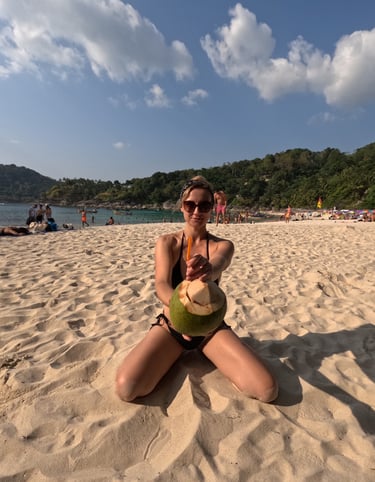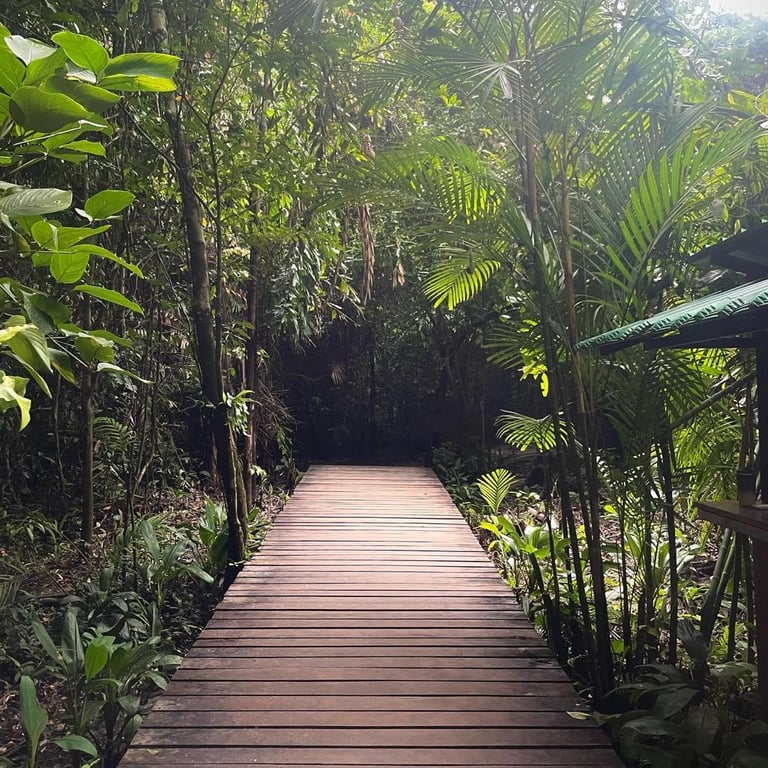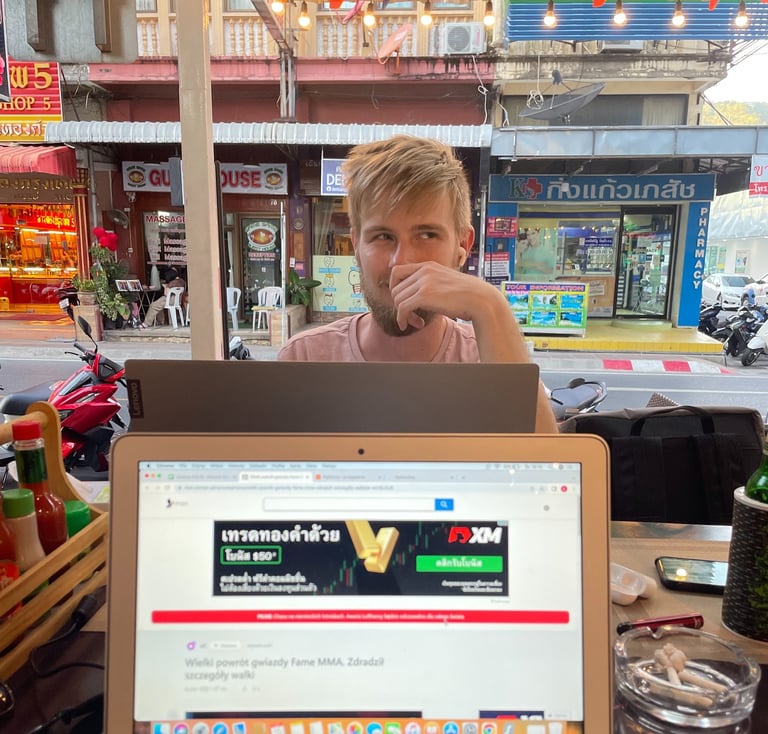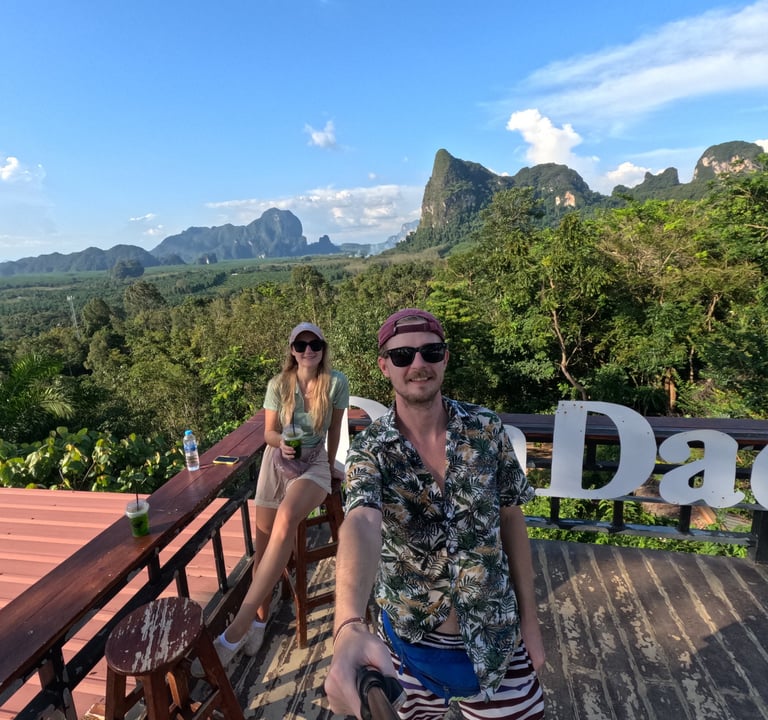
Where smiles meet freedom
T H A I L A N D
Table of Contents
General Information – Where is Thailand? Government, religion, language, and currency
SIM card & Internet in Thailand
When to visit Thailand – weather & best time to go
Visa for Thailand
A brief history of Thailand
Phuket
Krabi
Tours & excursions
Travel itineraries

What you should know
before flying to Thailand
We both believe Thailand is one of the easiest (if not the easiest) countries in Southeast Asia to travel independently. Traveling around is smooth, pleasant, and pretty much stress-free.
Simply put - Thais know tourism. They’re absolute masters of logistics and business.
Wherever you want to go, you’ll get there - by tuk-tuk, minivan, ferry, speedboat, catamaran, Grab, plane, train, long-tail boat, songthaew, or even a quirky little saleng motorbike. I’ll break down all the transport options in an upcoming blog post - I’ve probably missed a few already 🚀
And if you ever get lost - don’t worry. The Thais will know what to do 😉
So many times, when we had no plan, no booking, no clue - a Thai person would appear out of nowhere with a ready-made solution (and usually at a great price). Sometimes there’s really no point in bargaining - the local “word-of-mouth” price often matches what you find online.
One thing to keep in mind: Thailand today isn’t the same as it was before Covid - or 10 or 15 years ago. It’s not as empty, wild, or dirt cheap as some remember.
But it’s still beautiful, green, and - compared to most places - wonderfully affordable. The only things that have really gone up? Flights and accommodation.
So let’s start from the top - the textbook basics - just enough to make sure you don’t commit any classic faux pas on your trip.
The world is changing at a crazy pace - and Thailand is changing with it. Don’t listen to people who’ve been living in Asia for 20 years and keep telling the same old stories, or to blogs that just copy them. I know people who’ve lived their whole lives in the Karkonosze mountains and have never even climbed Śnieżka… So yeah, outdated information spreads fast. That’s how some folks abroad still think Poland doesn’t have card payments, skyscrapers, or internet access. If you want to know what Thailand is really like - how to get around, what things cost, and which places are actually worth visiting - we’re here to share some real insights and answer your questions.
WHERE IS THAILAND?
Thailand - officially the Kingdom of Thailand - is a country in Southeast Asia with its capital in Bangkok. It shares borders with Laos, Cambodia, Malaysia, and Myanmar (formerly Burma). Until May 11, 1949, the country was officially known as Siam. However, locals have long called it Mueang Thai, meaning “the land of the free.” In fact, the word Thai itself translates to “free.” Today, the country’s official name remains the Kingdom of Thailand, though it’s affectionately known around the world as The Land of Smiles.
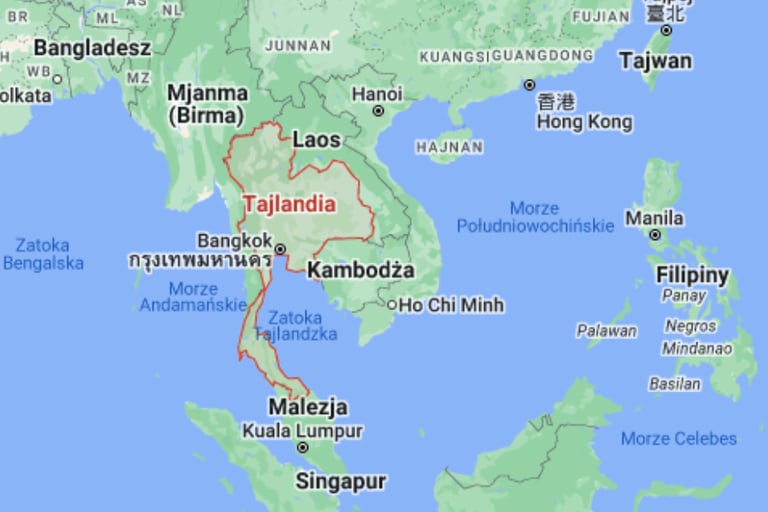

GOVERNMENT
Thailand is a constitutional monarchy. The head of state is the King, currently Maha Vajiralongkorn – King Rama X, who ascended the throne in 2016. It’s strictly forbidden to speak disrespectfully about any member of the royal family - both Thais and foreigners can face imprisonment for doing so. The King’s image is visible everywhere - on banknotes, in public buildings, and even along the streets. According to many sources, the King of Thailand is among the wealthiest monarchs in the world. At present, he resides in his new residence, the Chitralada Palace, while his previous home - the Grand Palace in Bangkok - is now open to visitors. However, official state ceremonies still take place there.
RELIGION
The dominant religion in Thailand is Buddhism, practiced by around 93% of the population. Other faiths, such as Hinduism, Islam, Christianity, and animism, are also present and peacefully coexist. Each religion celebrates its own holidays, so the number of public holidays in Thailand is quite high. It’s a good idea to check the local holiday calendar before your trip - not because everything shuts down completely, but you might, for instance, be unable to buy alcohol on certain days. And let’s be honest - sunbathing in 32°C (90°F) without a cold beer might be a shock for some vacationers. Luckily, there’s always the backup plan: fresh, chilled coconuts!
LANGUAGE
The official language of Thailand is Thai - a tonal language that may sound tricky at first, but don’t worry! Even a few basic phrases will make locals smile (and they’ll truly appreciate your effort). Here are some useful expressions worth remembering. You can paste them into a translator and listen to the correct pronunciation :)
Hello - sà-wàt-dii kha (if you’re a woman)/ sà-wàt-dii khrap (if you’re a man)
Thank you - kàwp kun (kha/khrap)
Sorry / excuse me - kăw-tôot (kha/khrap)
Yes - châi
No - mâi
Good bye - Lā k̀xn (kha/khrap)
CURRENCY
The official currency of Thailand is the Thai Baht (THB).
You’ll find banknotes in denominations of 20, 50, 100, 500, and 1,000 baht. Money in Thailand is treated with great respect - each banknote features one of the country’s monarchs.
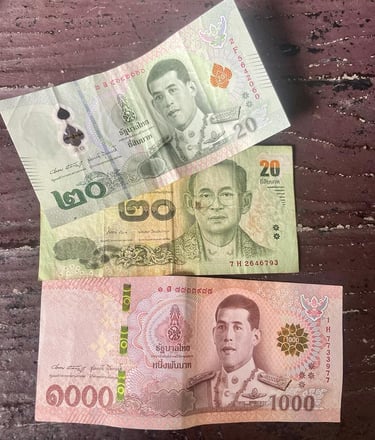

SIM CARD - INTERNET ACCESS
The best mobile operators in Thailand are AIS, TrueMove, and DTAC – with the latter usually being the cheapest. All you need to buy a SIM card is a valid ID document. Thai law requires SIM card registration, so it’s best to carry your passport when purchasing one. In smaller towns and rural areas, shop staff may be more flexible about this rule, but officially registration is mandatory.
Here are the current prices:
Unlimited weekly internet – 79–89 THB
Unlimited monthly internet – 488 THB
Weekly internet (depends on data usage) – 55–199 THB
Unlimited monthly internet – 599 THB
Unlimited weekly internet – 59 THB
Monthly internet (depends on data usage) – 299–799 THB
From my own experience, I recommend TrueMove and AIS – they offer the best coverage and work almost everywhere in the country.
How to top up your SIM card
The easiest way is to visit a 7-Eleven store – Thailand’s version of a convenience shop on every corner. Just ask for a top-up and you’ll receive a receipt with a recharge code (yes, just like in the good old days). You can also find top-up machines in many stores – they look a bit like ATMs. Simply enter your phone number, pay the amount you want to add, and you’ll receive an SMS confirmation within seconds.
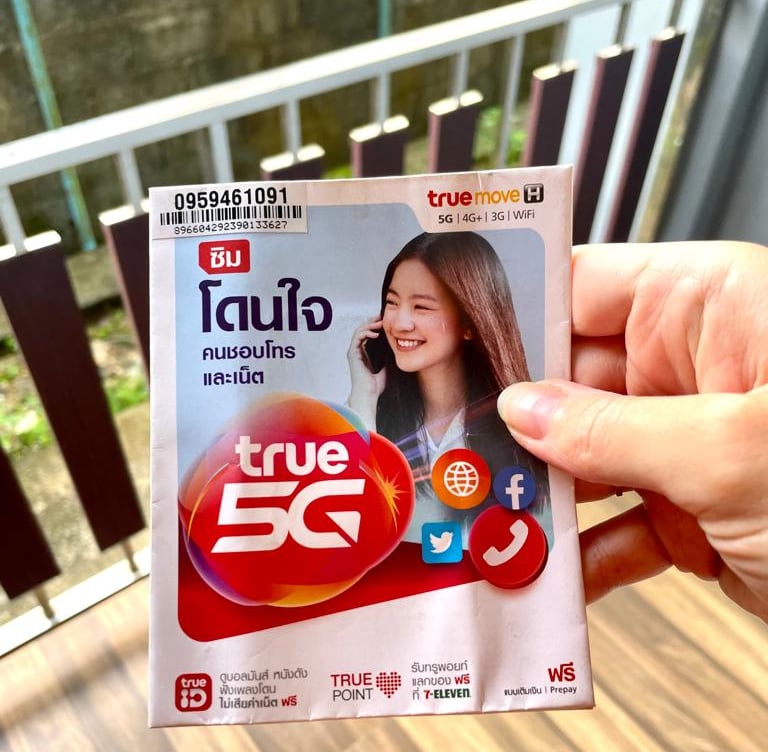

WEATHER – WHEN TO VISIT THAILAND?
Thailand has a tropical monsoon climate, with distinct wet and dry seasons. The general rule is simple: the farther south you go, the longer the rainy season lasts.
In the north, rain typically falls from June to September, while in the south, it starts earlier – from May to October.
On the west coast, around Phuket, Krabi, and Koh Lanta, the best weather conditions are between November and March. The heaviest rainfall usually occurs in September and October. On the east coast, which borders the Gulf of Thailand, the rainy season lasts from September to January. This means that islands like Koh Samui and Koh Tao are best visited between February and August. Read more about Thailand's weather here.

Visa for Thailand
As of July 2024, Polish passport holders can travel to Thailand for tourism purposes and stay in the country for up to 60 days without applying for a visa. Upon arrival, you’ll receive an entry stamp in your passport, which allows you to remain in Thailand for that period. The stay can be extended once for an additional 30 days at any local Immigration Office in Thailand. You can read more about the new entry rules here.
If you’d like to know exactly how to extend your visa while in Thailand, leave a comment under the Instagram post below — I’ll create a separate blog article on that soon
History of Thailand
Thailand, once known as Siam, has a long and fascinating history marked by powerful kingdoms, rapid development, and at times, political uncertainty, coups, and transitions.
Early Kingdoms and the Sukhothai Era (1238–1438)
The Sukhothai Kingdom is considered the first true Thai state. The city of Sukhothai was founded in 1238 and became the first capital of Thailand. Under King Ramkhamhaeng (around 1279–1298), the kingdom entered its golden age - the first Thai alphabet was created, and Theravada Buddhism became the dominant religion and cultural foundation.
The Ayutthaya Kingdom – The Medieval Age (1351–1767)
Founded by King Ramathibodi I, about 350 km south of Sukhothai, Ayutthaya quickly grew into one of the most powerful kingdoms in Southeast Asia. In the 15th century, it conquered Sukhothai, which later fell into decline and obscurity. Ayutthaya became a vibrant center of trade and culture, attracting merchants from India, Persia, China, and later Europe. The city was filled with golden temples, grand palaces, and a flourishing arts scene. However, in the late 18th century, Ayutthaya was destroyed by the Burmese army, ending over 400 years of dominance and leaving much of Thailand in ruins.
The Thonburi Kingdom (1767–1782)
After Ayutthaya’s fall, General Taksin managed to reunify the country, declaring himself king and establishing a new capital in Thonburi. His brief but energetic reign focused on reconstruction and consolidation - rebuilding cities and temples, reorganizing the army, and restoring trade. Despite his achievements, Taksin’s increasingly erratic behavior led to his overthrow by General Chakri.
The Rattanakosin Kingdom (from 1782)
In 1782, King Rama I (General Chakri) ascended the throne, founding the Chakri Dynasty, which continues to rule Thailand today. He moved the capital from Thonburi to Bangkok and initiated major restoration projects, including the construction of Wat Phra Kaew (Temple of the Emerald Buddha). This period marked the start of a new era of cultural and political revival.
Modernization and avoiding colonization (19th Century)
During the reigns of King Mongkut (Rama IV) and King Chulalongkorn (Rama V), Thailand underwent profound modernization. The country introduced educational reforms, abolished slavery, modernized its military and administration, and carefully balanced relations with Britain and France. These reforms helped Thailand remain the only country in Southeast Asia never colonized by a European power.
Political turbulence and transformation in the 20th century
The Siamese Revolution of 1932 ended absolute monarchy and introduced a constitutional system, marking the beginning of modern Thai democracy - though often interrupted by military rule.
During World War II, Thailand allied with Japan under Prime Minister Phibun Songkhram, a controversial move that aimed to reclaim lost territories but led to political tension at home and abroad.
In the Cold War era (1945–1975), Thailand became a key ally of the United States, hosting U.S. military bases and maintaining an anti-communist stance. This alignment deepened internal political divisions, setting the stage for recurring military coups in the decades that followed.
Democratic aspirations and military coups. From the 1970s to today, Thailand has undergone numerous political transformations - marked by frequent coups (the most recent in 2014) and short-lived governments. These events reflect the country’s ongoing struggle between democratic aspirations and the persistent influence of the military in national politics.
The era of the new constitution and political crisis (1997–2010)
The 1997 Constitution, often referred to as the “People’s Constitution,” marked a major step toward greater democratization and civil rights in Thailand. However, growing tensions between the “Red Shirts” (supporters of former Prime Minister Thaksin Shinawatra) and the “Yellow Shirts” (monarchists and conservatives) led to deep political crises and mass protests, especially between 2006 and 2010.
The 2014 coup d’État – a broader context
The conflict that led to Thailand’s 2014 coup revolved around two main political movements: the “Red Shirts”, supporters of former Prime Minister Thaksin Shinawatra (who was ousted by a military coup in 2006 and forced into exile), and the “Yellow Shirts”, a group of monarchists and conservatives backing the traditional elites and the monarchy.
Even in exile, Thaksin Shinawatra remained an influential figure in Thai politics, largely through his sister Yingluck Shinawatra, who became Prime Minister in 2011. Many viewed her government as a continuation of Thaksin’s rule, which fueled strong opposition.
In November 2013, the government attempted to pass a controversial amnesty bill that would have allowed Thaksin to return to Thailand without facing legal consequences. This move sparked massive protests and deepened the existing divisions within the country. The Yellow Shirts and their allies began holding regular demonstrations, accusing Yingluck’s administration of corruption and nepotism.
As tensions grew, clashes between rival groups intensified. By May 2014, after months of political deadlock and unrest, Thailand had descended into chaos.
On May 20, 2014, the Thai military, led by General Prayut Chan-o-cha, declared martial law, claiming it was necessary to restore order and stability. Initial assurances that this was not a coup quickly proved false - just two days later, the military staged a full coup d’état.
Television and radio stations were seized, the constitution was suspended, the government dissolved, and a curfew imposed. Prayut Chan-o-cha declared himself head of the National Council for Peace and Order (NCPO), effectively placing the country under military rule.
In the years following the coup, the military government restricted freedom of speech, assembly, and the press. Political activities were tightly controlled, and anti-government protests were often suppressed by force. Activists, journalists, and critics were regularly detained, sometimes charged under strict laws, including the lese majeste code, which criminalizes defamation of the monarchy.
One of the NCPO’s main goals was to reform the political system, including drafting a new constitution. In 2017, Thailand adopted a new constitution through a referendum widely criticized for its lack of transparency and freedom during the campaign. The new charter strengthened the military’s influence and introduced an electoral system designed to prevent any single party from gaining full control of parliament.
While the coup drew international criticism - including from the United States, the European Union, and other nations urging a return to civilian rule and democracy - it also found support among some Thais who were weary of years of political turmoil.
Internally, the coup brought a degree of stability, but at a high cost - restrictions on civil liberties and increased political repression.
The 2019 Elections
On March 24, 2019, Thailand held its first general election since the 2014 coup - a long-awaited vote widely seen as a test of the country’s democratic future. Many political parties participated, but two major forces dominated the scene:
Pheu Thai Party – associated with Thaksin Shinawatra and his family, enjoying strong support from the “Red Shirts”.
Palang Pracharath Party - closely aligned with the military and Prime Minister Prayut Chan-o-cha, advocating the continuation of his leadership.
The results were complex and controversial. While Pheu Thai won the most votes, Palang Pracharath secured a significant number of parliamentary seats.
After weeks of negotiations and political maneuvering, Prayut Chan-o-cha was reappointed as Prime Minister, thanks to a joint parliamentary vote that included appointed senators, most of whom were considered pro-military. Although Prayut now led a civilian government, it was widely seen as a continuation of military rule. His second term was heavily defined by the COVID-19 pandemic, which had a severe impact on Thailand’s economy - particularly its vital tourism sector.
In 2020, Thailand witnessed the resurgence of mass pro-democracy protests, led by students, young people, and civic activists. They called for true democracy, constitutional reform, greater equality, and even the separation of religion and state - bold demands in Thailand’s traditionally conservative society. Although these protests faced harsh crackdowns, they revealed deep political and generational divides, as well as a strong desire for change among younger Thais.
Ultimately, the 2019 elections did not bring a major shift in Thailand’s political landscape. However, they clearly highlighted the country’s uncertain future, as multiple forces - from the military and traditional elites to the reform-minded youth - continue to shape Thailand’s path forward.
The 2023 General Election – a major shift
Thailand’s general election, held on May 14, 2023, marked a turning point in the country’s political landscape. The spotlight was on two main parties: the Move Forward Party (MFP), led by Pita Limjaroenrat, and Pheu Thai, long associated with the Shinawatra family.
In a surprise result, the Move Forward Party emerged as the largest winner, securing the most seats in parliament. Pheu Thai came in second, with 138 seats, while Prayut Chan-o-cha’s United Thai Nation Party finished fifth, winning just 36 seats.
The outcome was widely interpreted as a clear message from the Thai people, expressing a desire for change and a rejection of continued military-backed rule. The Move Forward Party gained overwhelming support in Bangkok and other major cities, winning 32 of the 33 seats in the capital.
After the election, the MFP attempted to form a coalition government, but Thailand’s political structure posed major obstacles - particularly the 250-member appointed Senate, which holds significant power in selecting the prime minister. When the MFP failed to secure enough parliamentary support, Pheu Thai ended its alliance with them and instead formed a new coalition with conservative, pro-establishment parties. The party then nominated Srettha Thavisin as Prime Minister, who was elected by parliament on August 22, 2023.
The 2023 election results represented a turning point in Thai politics. The Move Forward Party, with its progressive and democratic agenda, gained strong backing - especially among younger voters - while Prayut Chan-o-cha and his military-aligned allies lost significant influence. Although Pheu Thai did not win outright control, its decision to align with conservative parties allowed it to lead the new government under Srettha Thavisin. The 2023 election reflected the Thai people’s growing aspiration to end decades of military coups and authoritarian rule. Yet, the challenges of coalition-building and the constraints of the political system also underscored Thailand’s ongoing struggle toward full democratic reform.
Contemporary Thailand
Modern Thailand stands at a crossroads, balancing tradition with a push for reform. The country remains one of Southeast Asia’s key economies, with a rich cultural heritage and a strong tourism sector, yet it continues to grapple with political instability, social inequality, and calls for greater freedom.
A new generation of Thais is increasingly vocal about democracy, transparency, and modernization - shaping the next chapter of a nation that continues to evolve between its historic past and its dynamic future.
If you’re looking for organized tours in Thailand, feel free to check out our GetYourGuide link.
By booking through it, you’ll be supporting our future travels - at no extra cost to you.

Need help planning your vacation?
Planning a trip to Thailand? Need someone to help organize your dream vacation? Or maybe just a few tips and a friendly chat? We’re here for you.
Drop as a line
Do you have questions about traveling to Asia? Suggestions for the blog? Want to collaborate? Need help or just want to meet for coffee?
Feel free to get in touch.


